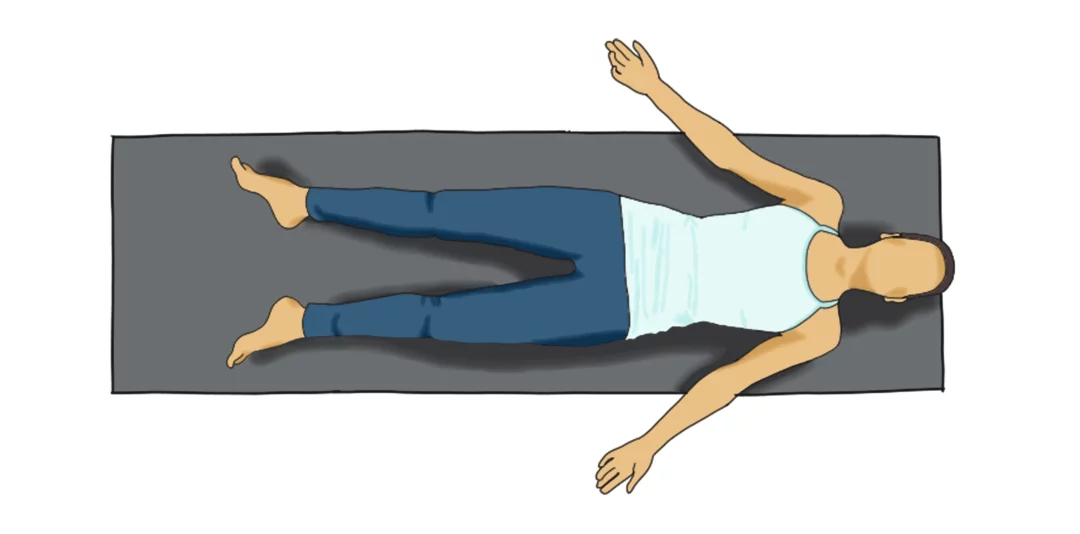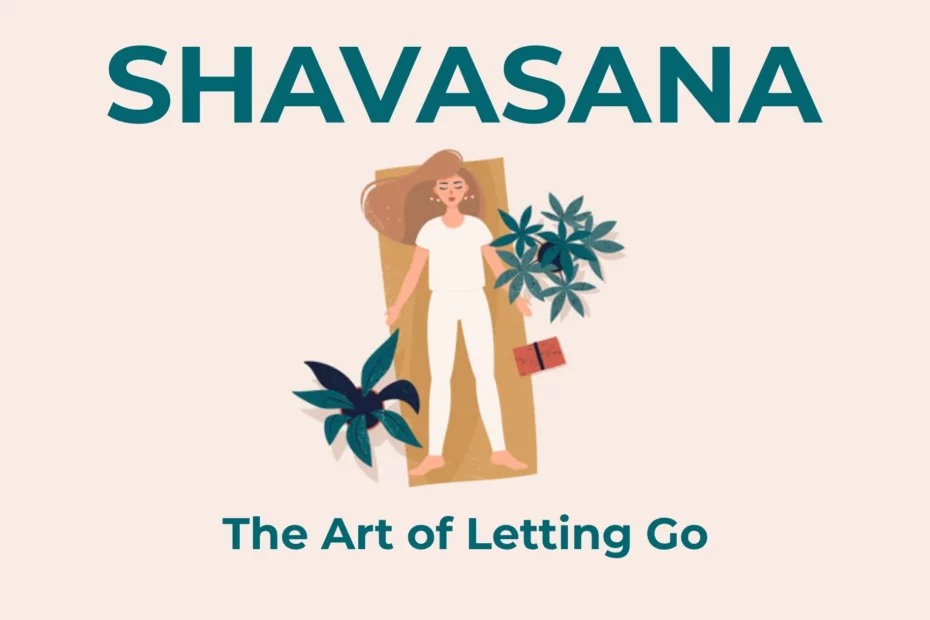Yoga has become one of the widely used methods to unwind and relax your mind. Yoga represents harmony, togetherness, and an overall healing process. But do you know? Whatever may be your yoga routine, there’s a secret element that is always there. Without it, your yoga session does not end. Not practicing it is like making a bed for a good night’s sleep and not sleeping on it. The secret element is “Shavasana”. Practicing shavasana after a yoga session is like putting a cherry on top. Read the full article to know What is Shavasana? Its technique and benefits.
What is Shavasana (Corpse Pose)?
Shavasana is a Sanskrit word pronounced as sha-vahs-ah-nah. ‘Shava’ refers to the corpse and ‘Asana’ refers to the pose. In this asana, the objective is to imitate a corpse. Hence this asana is also referred to as Mrit asana (Mrit refers to dead). Once life has departed, the body remains still and no movement is possible. Similarly, in this asana, you have to remain still. By remaining motionless for some time and keeping the mind still while you are fully conscious, you learn to relax. This conscious relaxation invigorates and refreshes both body and mind. But it is much harder to keep the mind still than the body. Therefore, this apparently easy posture is one of the most difficult to master.
Step-by-step technique:
- Lie flat on the back full length like a corpse. Keep the hand a little away from the thighs, with the palms up.
- Close the eyes. If possible place a black cloth folded four times over the eyes. Keep the heels together and the toes apart.
- To start with, breathe deeply. Later the breathing should be fine and slow, with no jerky movements to disturb the spine or the body.
- Concentrate on deep and fine exhalations, in which the nostrils do not feel the warmth of breath.
- The lower jaw should hang loose and not be clenched. The tongue should not be disturbed, and even the pupils of the eye should be kept completely passive.
- Relax completely and breathe out slowly.
- If the mind wanders, pause without any strain after each slow exhalation.
- Stay in the pose for at least 10 minutes. Once you start enjoying it, you will stay in the pose for a longer duration.
- One is apt to fall asleep in the beginning. Gradually, when the nerves become passive, one feels completely relaxed and refreshed.
- In good relaxation, one feels energy flow from the back of the head towards the heels and not the other way around. One also feels as if the body is elongated.
Tip: If you find it difficult at first to be still mentally, start from your right foot and take your attention to every body part one by one. Stay at one part for at least 2-3 breaths. You will automatically become still.

Shavasana in a scientific perspective:
- The practice of Shavasana for short duration immediately improves cardiovascular parameters including cardiac output and systemic peripheral resistance which directly influence blood pressure and might be beneficial in normal subjects and hypertensive patients as well. Reference- https://www.researchgate.net/publication/292194742_Immediate_Effect_of_Shavasana_on_Cardiac_Output_and_Systemic_Peripheral_Resistance_in_Untrained_Young_Adults
- How does Shavasana work at the anatomical level? How can a posture that requires no movement provide so many benefits? These are interesting questions that we will now try to answer. To do this, it is important to explain how the brain is made up. The brain is divided into two hemispheres, sympathetic and parasympathetic, preparing respectively for activity and rest. Since life in society is stressful and requires the continuous processing of a multitude of information, the sympathetic hemisphere tends to predominate. Savasana allows to regulate this by activating the parasympathetic hemisphere, thus inducing relaxation.
Shavasana in Ancient scriptures:
- Verse 32 of the First Chapter of the Hatha Yoga Pradipika states: ‘Lying upon one’s back on the ground at full length like a corpse is’ called Shavasana. This removes the fatigue caused by the other asanas and induces calmness of mind.’
- Mritasana is thus described in verse 11 of the Second Chapter of the Gheranda Samhita: ‘Lying fiat on the ground (on one’s back) like a corpse is called Mritasana. This posture destroys fatigue, and quiets the agitation of the mind.’
- ‘The mind is the lord of the Indriyas (the organs or senses); the Prana (the Breath of Life) is the lord of the mind.’ ‘When the mind is absorbed it is called Moksha (final emancipation, liberation of soul); when Prana and Manas (the mind) have been absorbed, an undefinable joy ensues.’ Verses 29 and 30, chapter IV, Hatha Yoga Pradipika.
Tips to go deeper in Shavasana:
1. Creating the right environment:
You will reap more benefits of Shavasana if you relax more in the pose. So creating a right, relaxing environment before your practice is so important. Try to choose a place with dim lighting and away from external noises.
2. Incorporate Aromatherapy:
It has also been proven scientifically, that different aromas have an impact on our minds. Some aromas like lavender, rosemary, etc. help you unwind better. You can use these in different forms (diffuser, incense sticks, etc.).
3. Play soothing music:
Playing soothing music or any mantra chanting in the background can also help you go deeper into the asana.
Physical Benefits of Corpse Pose:
- Muscle Relaxation: If you practice Shavasana after your yoga session or gym session, your body gets relaxed and cells start rejuvenating. The inclusion of shavasana in a yoga session is the only reason why you feel refreshed after the session.
- Shavasana improves your posture.
- Due to slow and long breathing in the asana, your breathing gets better.
Mental and Emotional Benefits of Corpse Pose:
- Dramatic reduction in the stress levels.
- Significant improvement in anxiety after continuous practice.
- Improved concentration and mental clarity.
Conclusion:
To tame Prana depends upon the nerves. Steady, smooth, fine, and deep breathing without any jerky movements of the body soothes the nerves and calms the mind. The stresses of modern civilization are a strain on the nerves for which Shavasana is the best antidote.
For more such interesting content, please visit Yogtastic. Also, embrace the power of Yoga with our cool designs. Let your apparel speak for you. Please visit the shop by clicking on the link below.

Excellent tips! I’ll definitely use these.
I love how you’ve broken down this topic into easy-to-understand sections. The step-by-step approach you’ve taken is very helpful.
Your posts are always so informative.
Hello there, You have done an excellent job. I抣l definitely digg it and personally recommend to my friends. I’m confident they will be benefited from this web site.
I have been reading out a few of your posts and it’s clever stuff. I will make sure to bookmark your blog.